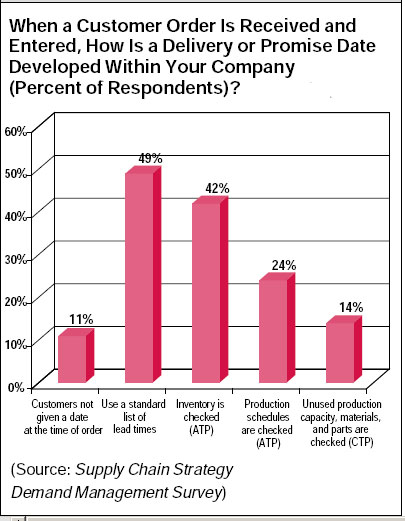Order Promising Accuracy is Different than Optimization
 Lapide notes fixing order promising accuracy isn’t the same thing as optimizing order promising strategies. The former looks only from the view of getting the right information to the customer. Order promising optimization, however, attempts to execute order promising strategies that balance customer requirements with the needs and strategies of the company. Lapide notes fixing order promising accuracy isn’t the same thing as optimizing order promising strategies. The former looks only from the view of getting the right information to the customer. Order promising optimization, however, attempts to execute order promising strategies that balance customer requirements with the needs and strategies of the company.
That can only be achieved through segmentation, in which certain customers and orders receive preferential treatment, Lapide says.
Relatively few companies are using sophisticated order promising segmentation strategies. In the MIT survey, 40% of companies operated on a FIFO basis – orders were taken and commitments made based purely on order sequence – a percentage that SCDigest believes may actually be below the true number. Another one-third of the companies gave preference to customers that generated the largest sale revenues.
“Such practices and fulfillment strategies are not usually part of optimal order promising, which requires that limited resources be supplied to those customers that are prepared to pay more for them or to the most strategically important customers,” Lapide writes.
The bottom line, says Lapide: The most effective demand-management approach aligns a company’s tactical supply-demand plans with its customer segmentation strategies, policies, and priorities. When these components are in step, the company is well-prepared for its moment of truth—when a customer places an order and a fulfillment promise is made.
Do we need to pay more attention to “order promising?” What is the difference between accuracy and optimization? What should companies be doing here? Let us know your thoughts at the Feedback button below.
|